Published:
Author: Antonio Maria Guerra
How Is Champagne Made?
How is Champagne made? In this article we will find out how the French sparkling wine is produced: from its soil, to the grape varieties used, including the method that makes this extraordinary wine a true work of art.

How is Champagne made?
The ‘Champenoise’ method, also known as ‘traditional’ or ‘classic’, is used to make ‘natural’ sparkling wines like Champagne. Sugar and yeast are added to a mix of different wines, the ‘cuvèe’, to trigger a second fermentation. Since this process takes place inside a sealed bottle, the wine slowly incorporates the carbon dioxide produced thus becoming sparkling.
Here follow a few images showing step by step this procedure (click here for the printable infographic):

01. LThree varieties of grapes are used to make Champagne: Chardonnay, Pinot Noir and Pinot Meunier. The ‘Blanc de Blancs’ is made just with Chardonnay, the ‘Blanc de Noirs’ just with Pinot Noir and Meunier.
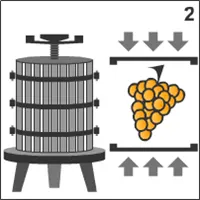
02. The grapes are softly pressed: the result is a very clear must, ready for the first fermentation. Selected yeasts are added: they transform sugar in alcohol and carbon dioxide. The grape juice becomes wine.
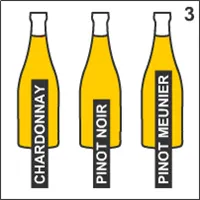
03. The main ingredients are finally ready: Chardonnay, Pinot Noir and Pinot Meunier.
Each one of these three ‘base-wines’ will enrich the Champagne with some of its typical traits.
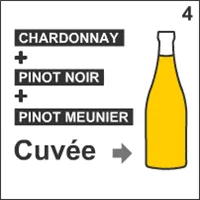
04. The ‘cuvée’ is a mix of these three wines: their quantities may vary, depending on the desired result. The only exceptions are, as already said, the ‘blanc the blancs’ and the ‘blanc de noirs’.

05. The ‘liqueur de tirage’, prepared with sugar, selected yeasts and minerals, is added to the cuvèe to start the second fermentation.

06. The ‘bidule’ is a small plastic cylinder meant to collect the residue of the dead yeast. It’s inserted in the neck of the bottle before sealing it using a crown cap.
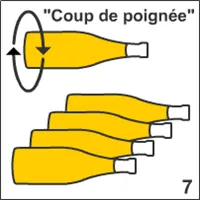
07. The bottles are placed horizontally in a fresh cellar (10°/12°c) for a couple of months: during this period the wine gets its bubbles (‘prise de mousse’). A long rest follows: during it, the taste of the wine is improved by the yeast residue (‘sur lattes’). Small rotations (‘coup de poignée’) prevent this residue from sticking to the sides of the bottles.

08. After a period that may vary from two up to ten years (and more), the wine is ready. The ‘remuage’ starts: the bottles are slowly rotated on both axes until they reach a vertical position. The residue of the yeast falls in the bidule. This operation can be performed both mechanically or by hand (using a ‘pupitre’).

09. The ‘disgorgement’ consists in opening the bottle.
Before removing the crown cap, the neck is usually immersed in a liquid at a temperature of -13°F (-25°C): this way the yeast residue freezes inside the bidule and this is easily extracted thanks to the internal pressure.

10. The opened bottle is topped up (‘dosage’) with the ‘liqueur d’expedition’. This ‘liqueur’ is made with champagne, sugar (not always) and sometimes a little bit of liquor.

11. The bottle is sealed with a cork, this is secured to its neck with a metal cage, known as ‘muselet’.
Let’s find out the fascinating origins of Champagne wine, as well as a great number of information and interesting facts. In order to read the article, please click on this LINK.
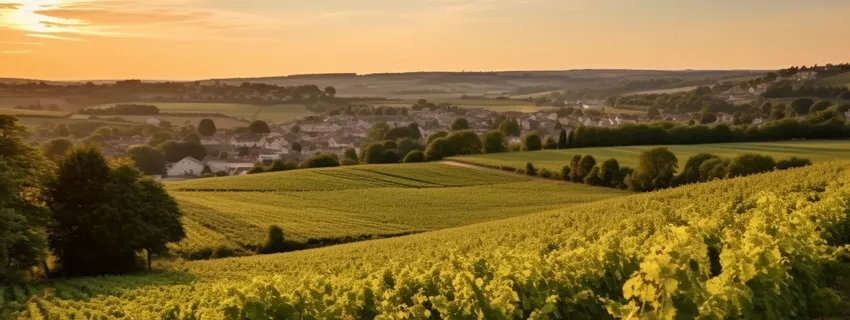
Where is Champagne from?
Champagne takes its name from the region in the north east of France where it’s produced. Sweet hills surrounded by ordered rows of vines, give life to an incredibly beautiful landscape. The main cities in this area are Troyes, Épernay and Reims.
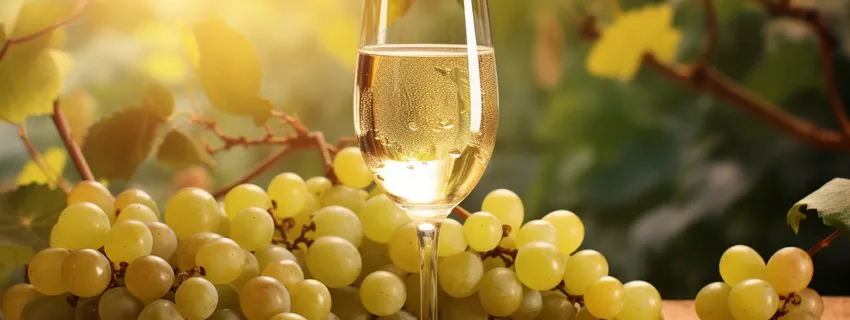
The grape varieties for Champagne.
To understand Champagne we have to deepen the knowledge of the grapes used to make it:
Read more
- Chardonnay
Typology: white grape;
Place: Mostly Cote des Blancs;
Aromas: Flowers, fruits (peach, exotic fruits, lemon), minerals (chalk);
Note: Chardonnay gives to Champagne finesse and elegance; - Pinot Meunier
Typology: red grape;
Place: Mostly Valèe de la Marne;
Aromas: Red berries, currant and cherry.
Note: Pinot Meunier gives to Champagne roundness and softness.

The corks for Champagne bottles.
Originally the bottles of wine were closed with primitive wooden plugs and secured using wraps made with cloth and wax. Many think that the Benedectine monk was the first to use corks: according to recent studies, this may not be true. It seems in fact that the ancient Romans already knew them, a knowledge lost after the fall of the Empire.
Dom Perignon secured corks to bottles using hemp strings, with a procedure requiring great strength and skill. In time, iron replaced hemp: the first pre-formed metal cage, known in France as ‘muselet’, was invented in the Mid-Nineteenth Century.
'Champenoise' vs. 'Charmat'.
The ‘Charmat’ method (also known as ‘Martinotti’), used to make sparkling wines, is quite different from the ‘Champenoise’, since the second fermentation starts in a steel tank hermetically sealed instead of a bottle. Keep in mind that this method can’t be used to make Champagne.
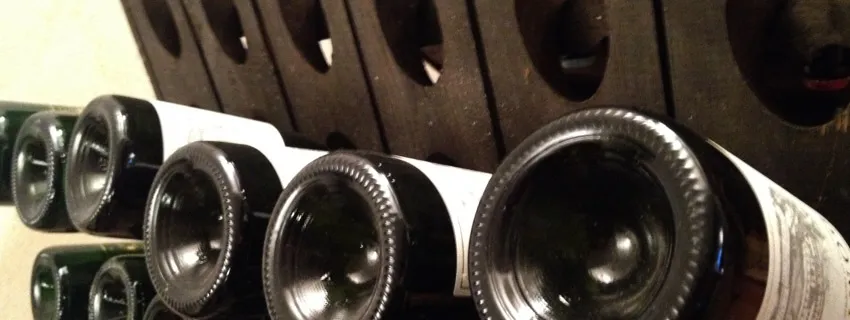
‘Remuage’ on a ‘pupitre’.
When Champagne is ready, the procedure know as ‘remuage’ starts. This consists in a slow rotation of the bottle of wine on both the axes that ends when it reaches the vertical position. This task can be performed both manually or using a machine. When performed manually, a ‘pupitre’ is generally used. It’s a wood frame with rows of round holes: to each row corresponds a different degree of inclination.

How is Champagne made? The first and the second fermentation of sparkling wines.
To start appreciating Champagne, it’s important to understand first what is the ‘fermentation’: a natural process that usually starts soon after the harvest, when grape juice becomes wine thanks to yeasts. These microorganisms metabolize sugar, producing alcohol and carbon dioxide. In the past, since it was very difficult to maintain the right temperature in cellars, the cold of a harsh autumn could suspend their work, forcing them to enter a sort of ‘hibernation’.
Read more
At the beginning of the following spring, the natural rise of heat quite often reactivated them, starting a second fermentation, also known as ‘rifermentation’. Nowadays this ‘accident’, not accidental anymore, is triggered on purpose by adding yeasts to wine. In this respect, it’s important to remember that the production of carbon dioxide during the second fermentation has a huge importance to make a natural sparkling wine.
Remember that carbon dioxide can be also artificially injected. Problem is that the ‘inflated’ wines usually don’t have a very fine taste and ‘perlage’.

Champagne Charlie: music for Champagne.
‘Champagne Charlie’ is a 1944 English musical movie in which the famous wine is repeatedly mentioned.

Champagne: the devil’s wine.
If the second fermentation of wine starts inside a sealed bottle, the renewed production of carbon dioxide causes the rise of its internal pressure. Up to the Seventeenth Century, due to the lack of knowledge and specific technologies, this represented quite a big problem, since it could led to a sudden, violent expulsion of the stopper or, in the worst cases, to a dangerous explosion.
Read more
It’s easy to understand that, at that time, this natural phenomenon was not really considered something useful, but rather an impending disaster to be avoided at all costs, an ‘accident sent by the devil’.
Not surprisingly, sparkling wine was nicknamed ‘le vin du diable’ (‘the devil’s wine’).
The true problem, far from being supernatural, was the little experience in controlling the refermentation process and the quality of bottles and caps, unable to resist the stress. Frequent accidents often caused great damage and forced cellar workers to wear masks and body protections to shield themselves.
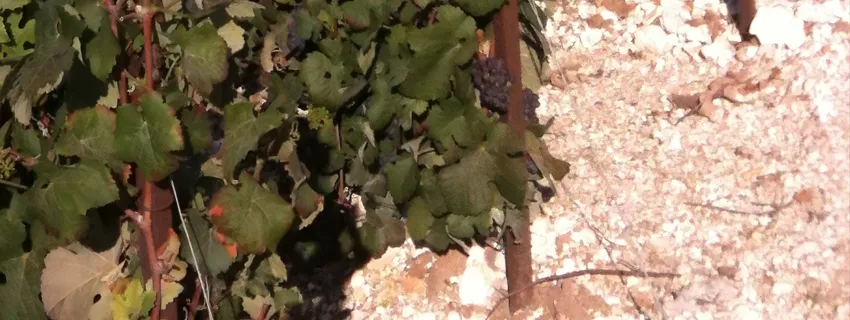
A soil rich in chalk for Champagne wine.
What makes Champagne so special? What makes its smell and taste so unique?
This famous sparkling wine is the sum of many parts: the nature of the terrain where its grapes grow is one of the most important. It’s stony, whitish, apparently not good for growing a plant … but a grapevine is not any plant, it’s different, giving its best in difficult conditions.
Read more
Year after year, its roots dig deeper and deeper, taking from the ground and giving to the grapes.
Champagne is the fruit of a soil rich in chalk: something evident when drinking it.

The sizes of Champagne bottles.
The dimensions of Champagne bottles vary, starting from the ‘standard’ (*1), containing less than a liter of wine, up to the ‘Melchizedek’, containing 30 liters.
Here follows the list:
- Standard bottle: 75 cl;
- Magnum: 1.5 litres (2 bottles of Champagne);
- Jeroboam: 3 litres (4 bottles of Champagne);
- Rehoboam: 4.5 litres (6 bottles of Champagne);
- Methuselah: 6 litres (8 bottles of Champagne);
- Salmanazar: 9 litres (12 bottles of Champagne);
- Balthazar: 12 litres (16 bottles of Champagne);
- Nebuchadnezzar: 15 litres (20 bottles of Champagne);
- Solomon: 18 litres (24 bottles of Champagne);
- Sovereign: 26.25 litres (35 bottles of Champagne);
- Primat: 27 litres (36 bottles of Champagne);
- Melchizedek: 30 litres (40 bottles of Champagne);
As you can easily imagine, the largest bottles, generally used to celebrate events, are almost impossible to handle (*2): dedicated tools have therefore been invented to tilt them progressively, allowing the wine to be poured.
Notes:
*1: Smaller sizes exist, a quarter of a liter and half liter, they are however very difficult to find on the market.
*2: Poor handling is caused not only by the volume but also by the weight of the bottles: this comes from the wine and from the glass that must be very thick to withstand the strong internal pressure.

Sugar and sparkling wines.
Terms like ‘brut’ and ‘dry’ indicate the sweetness of a sparkling wine. Here follows a list of these terms and the corresponding amount of sugar:
Read more
- Less than 3gr./liter: Brut nature;
- Between 0 and 6gr./liter: Extra brut;
- Between 6 and 12gr./liter: Brut;
- Between 12 and 17gr./liter: Extra dry;
- Between 17 and 32gr./liter: Dry;
- TBetween 32 and 50gr./liter: Demi-sec;
- More than 50gr./liter: Dolce;
Let’s find out the fascinating origins of Champagne wine, as well as a great number of information and interesting facts. In order to read the article, please click on this LINK.
Copyright information.
The images displayed in this page belong to WebFoodCulture.

